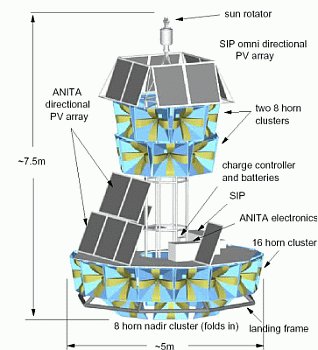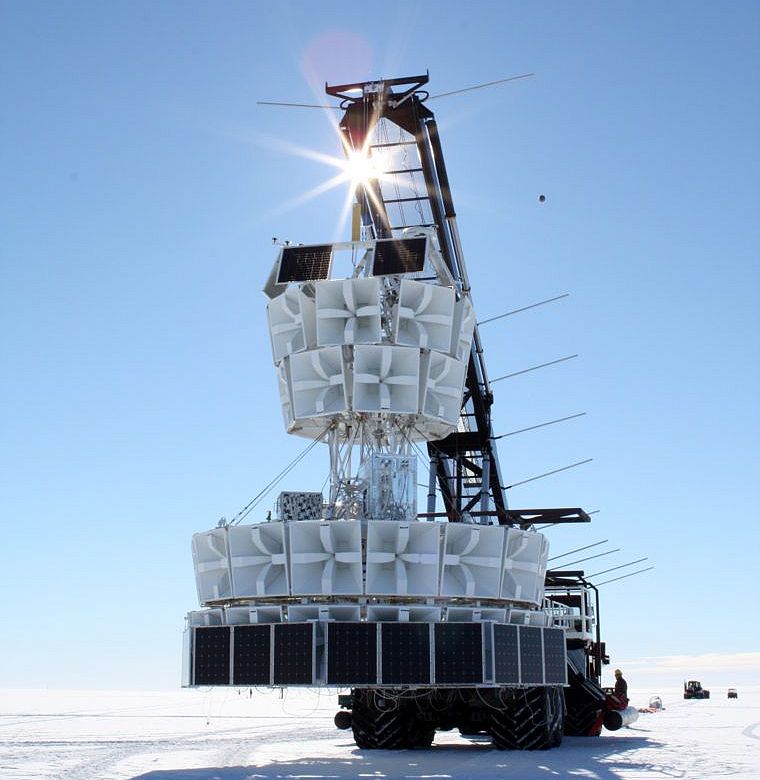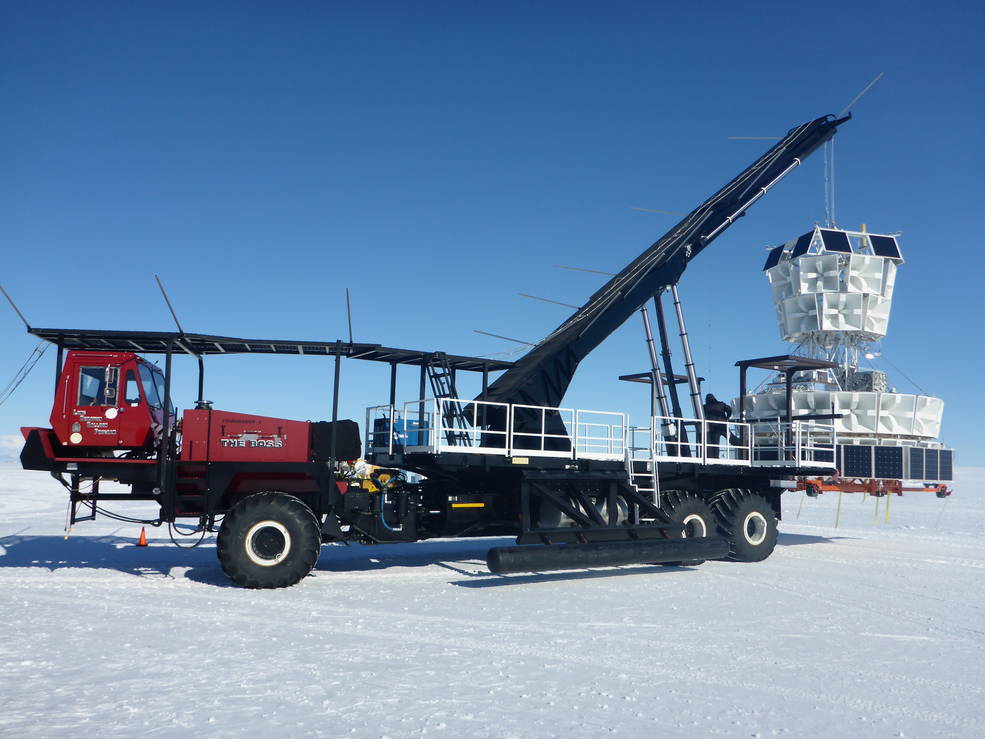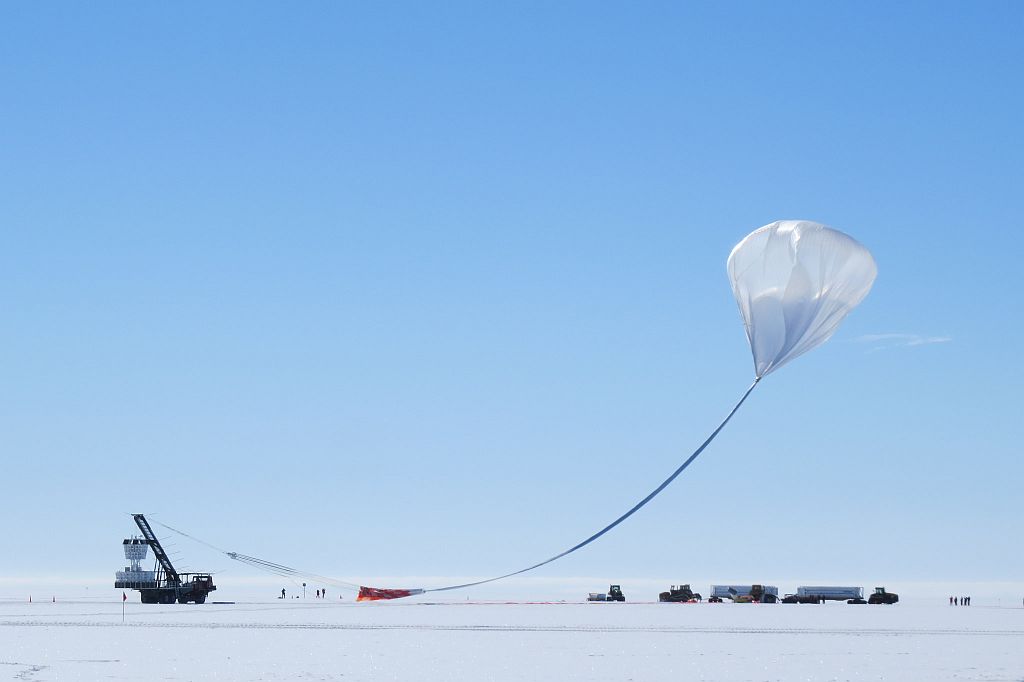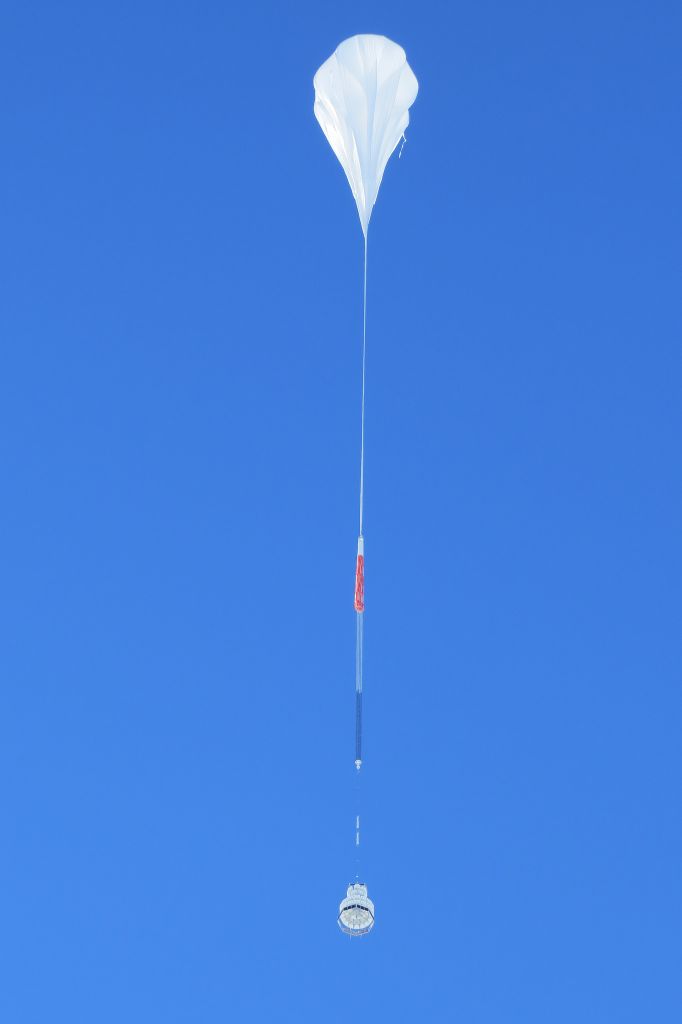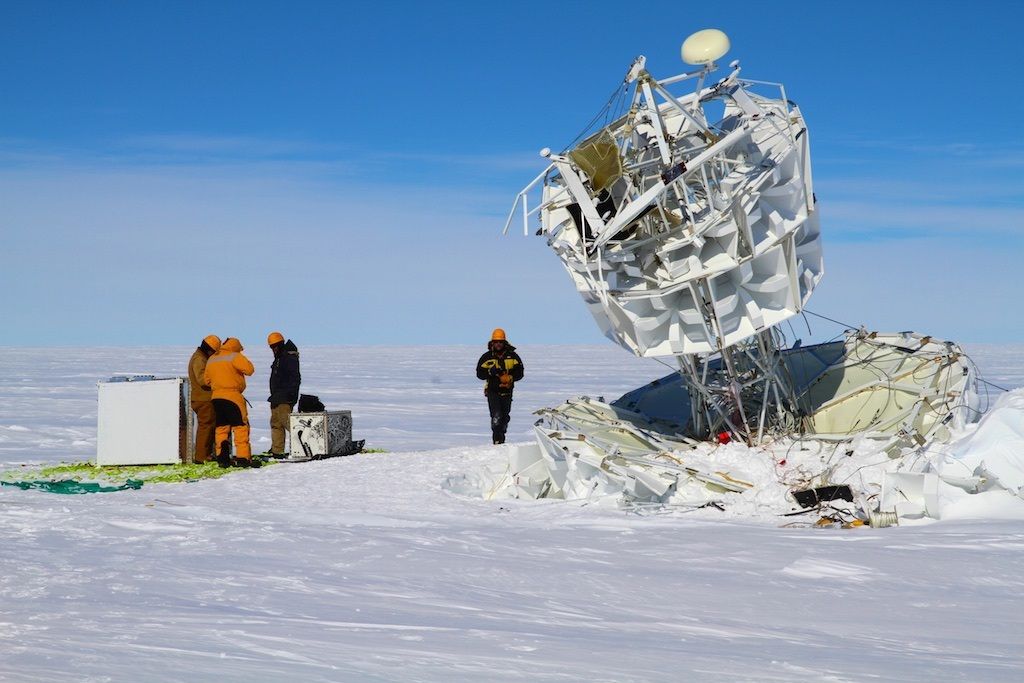Purpose of the flight and payload description
The instrument is a radio telescope to detect ultra-high energy cosmic-ray neutrinos from a scientific balloon flying over the continent of Antarctica. It will be the first NASA observatory for neutrinos of any kind.
Neutrinos are of great interest to astrophysicist as they are the only particle that can reach earth unattenuated at all energies. This is particularly of interest at high energies where other particles and photons will interact with the photons of the microwave background making them unable to propagate and survive over long astrophysical distances. In other words, if the scientists want to see the ultra-high energy universe, they should view it through the "light" of neutrinos.
The ANITA instrument detects these ultra-high energy neutrinos by use of the Askaryan effect. This effect predicts the production of a coherent radio emission from the cascade of particles produced in a high-energy particle interaction. In other words detecting a 'snap' in the radio frequencies caused by the interaction of the ultra-high energy neutrino.
In order to detect this radio emission (Askaryan pulses) it's needed a radio transparent medium for the interaction to occur in - and lots of it since these interactions are rare. Some materials that are radio transparent are salt, sand and ice. Also needs a fairly radio quiet area as the Askaryan pulses are very faint signals.
The ANITA instrument was designed to fly over the continent of Antarctica - the location of some of the most pure ice in the world as well as one of the most radio quiet spots on earth. Flying at 120,000 ft (~ 37 km) the instrument can observe ~1.5 million square kilometers of ice. However Neutrinos are so rare that with a detection area that large the scientists don't expect to see more than a hundred or so events.
Details of the balloon flight
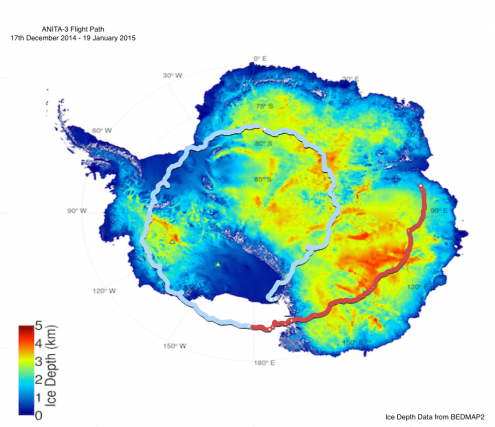
Balloon launched on: 12/17/2014 at 21:24 utc
Launch site: Williams Field, McMurdo Station, Antarctica
Balloon launched by: Columbia Scientific Balloon Facility (CSBF)
Balloon manufacturer/size/composition: Zero Pressure Balloon
Flight identification number: 657N
End of flight (L for landing time, W for last contact, otherwise termination time): 1/8/2015 at 23:50 utc
Balloon flight duration (F: time at float only, otherwise total flight time in d:days / h:hours or m:minutes - ): 22 d 9 h 14 m
Landing site: 100 miles from Australia's Davis Station, Antarctica
External references
- ANITA website University of Hawaii (Mauna Loa)
- A search for IceCube events in the direction of ANITA neutrino candidates arXiv - High Energy Astrophysical Phenomena (astro-ph.HE)
- An Antarctic answer to a cosmic question article by Oli Usher at the UCL Science blog
- ANITA III launched over Antarctica The Source, University of Washington, St Louis
- Antarctic Surface Reflectivity Measurements from the ANITA-3 and HiCal-1 Experiments submitted to Journal of Astronomical Instrumentation
- Balloon with a view The Economist
- Characterization of Atmosphere-Skimming Cosmic-Ray Showers in High-Altitude Experiments Journal of Cosmology and Astroparticle Physics, Volume 2024, Issue 07, id.065
- Constraints on the diffuse high-energy neutrino flux from the third flight of ANITA
- Images of ANITA's III recovery by an australian team from Davis station Australian Antarctic Division website
- Observation of an Unusual Upward-going Cosmic-ray-like Event in the Third Flight of ANITA arXiv Astrophysics - High Energy Astrophysical Phenomena
- Recent Results from ANITA CIPANP2018 proceedings
- The ANITA Anomalous Events as Signatures of a Beyond Standard Model Particle and Supporting Observations from IceCube High Energy Astrophysical Phenomena, arXiv.org
12858If you consider this website interesting or useful, you can help me to keep it up and running with a small donation to cover the operational costs. Just the equivalent of the price of a cup of coffee helps a lot.

